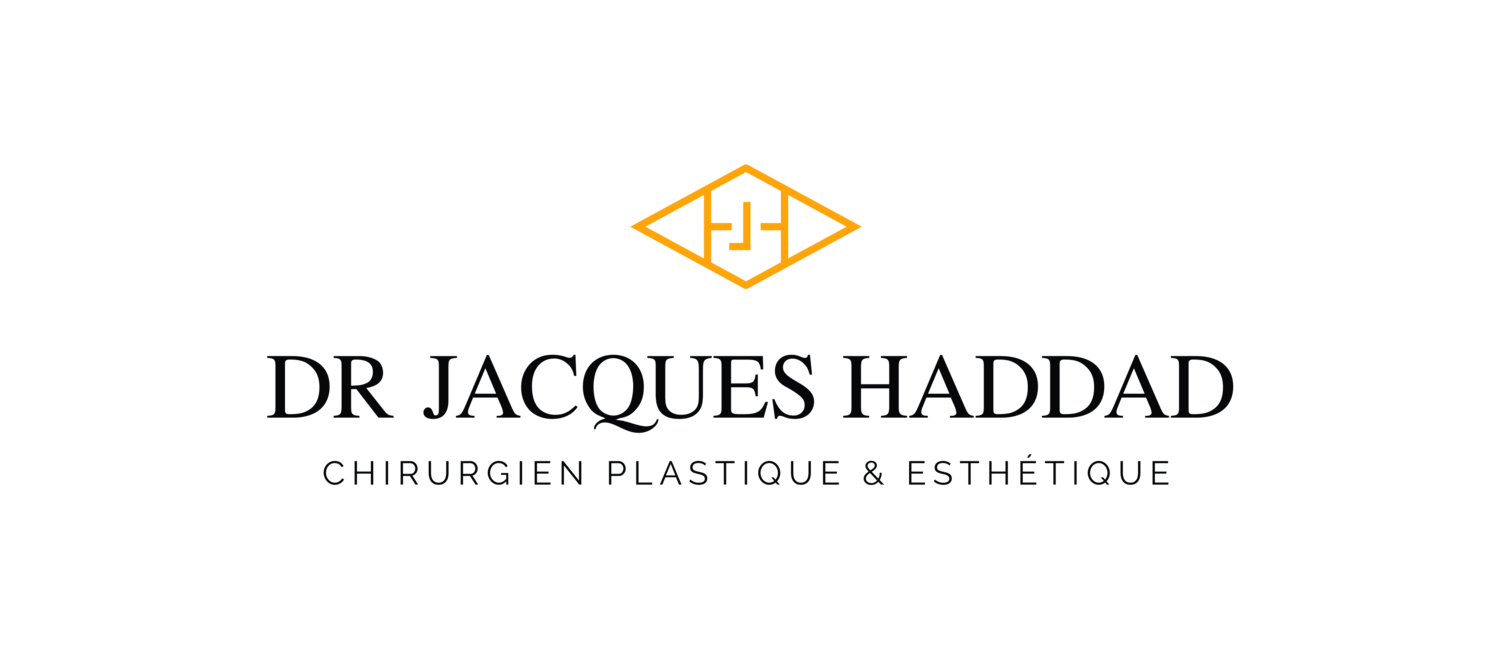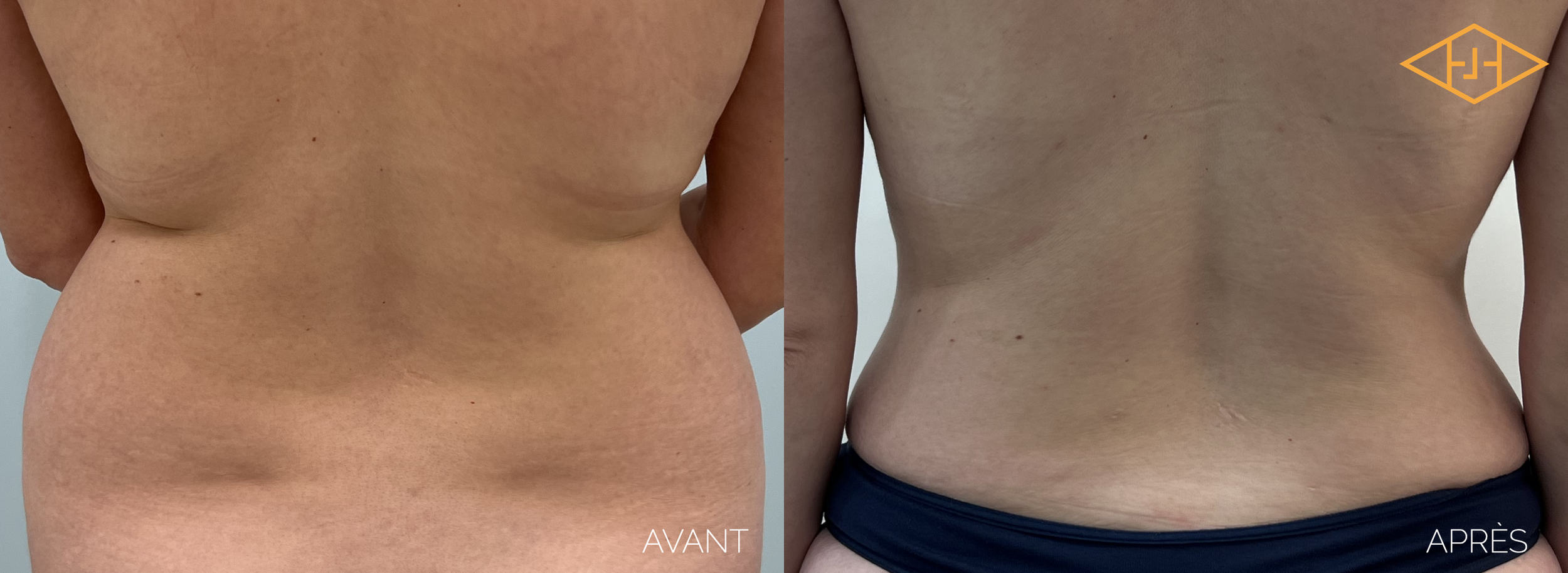Abdominoplasty
-
The Tummy Tuck Technique
Remove excess skin and fat, especially in the lower abdomen. The scar is located in the lower part of the abdomen and is thus reconciled in the underwear. In the case of a complete abdominoplasty, there will also be a scar around the belly button as this is displaced. The surgery is often combined with liposuction to improve the contour of the abdomen and the waistline. It can also be combined with breast surgery, to allow a complete treatment of the bust. The surgery is performed under general anaesthesia.
-
Recovery
The patient is encouraged to mobilise quickly, a shower will be allowed depending on whether or not there is a drain. The sleeping position, with the head elevated and a pillow under the knees, will help to reduce the pain. The patient moves spontaneously with a bent back for the first few days and gradually straightens up. This may cause temporary back pain. Dressing to be kept on for 48 hours and showers afterwards unless otherwise advised. Wear the girdle for the first month. Gradual resumption of activities after 10 to 14 days. The patient may resume exercise after 3 to 4 weeks, or as tolerated.
-
Complications
Short term: bleeding, infection, accumulation of abdominal wall fluid, phlebitis, wound dehiscence and stitch rejection. Long term: poor healing, decreased sensation in the lower abdomen, recurrence of abdominal wall or skin loosening.
-
Preparing for surgery
Stop smoking, avoid blood thinning medication. Respect the fasting period and clean the skin well with an antiseptic soap.
-
What to watch for after surgery
Pressure drop, bleeding from the wound or significantly in the drain. Purulent discharge from the wound. Fever. Calf pain, shortness of breath.
-
Associated fees
from $9,345 (plus taxes)
6 months post-op mini-abdominoplasty
6 months post-op mini-abdominoplasty (scar)
6 months post-op mini-abdominoplasty
6 months post-op mini-abdominoplasty
6 months post abdominoplasty
6 months post abdominoplasty
6 months post abdominoplasty
6 months post abdominoplasty
6 months post abdominoplasty
Post-op 3 months abdominoplasty
Post-op 3 months abdominoplasty
Post-op 3 months abdominoplasty
6 months post abdominoplasty
6 months post abdominoplasty
6 months post abdominoplasty
6 months post abdominoplasty
6 months post abdominoplasty
6 months post abdominoplasty
6 months post abdominoplasty
6 months post abdominoplasty
6 months post abdominoplasty
Post-op 6-month "Mommy Makeover": addition (350cc silicone) and breast lift, abdominoplasty and 360° liposuction
6 months post-op mini reduction and redraping + abdominoplasty + 360° lipo
6 months post-op mini reduction and redraping + abdominoplasty + 360° lipo
6 months post-op mini reduction and redraping + abdominoplasty + 360° lipo
6 months post-op mini reduction and redraping + abdominoplasty + 360° lipo
6 months post-op mini reduction and redraping + abdominoplasty + 360° lipo
6 months post-op mini-abdominoplasty
6 months post-op abdominoplasty 'fleur-de-lys' (reverse T)
6 months post-op abdominoplasty 'fleur-de-lys' (reverse T)
6 months post-op abdominoplasty 'fleur-de-lys' (reverse T)
6 months post-op abdominoplasty 'fleur-de-lys' (reverse T)
6 months post-op abdominoplasty 'fleur-de-lys' (reverse T)
6 months post-op abdominoplasty 'fleur-de-lys' (reverse T)
-
Many patients may be eligible for an abdominoplasty. Abdominoplasty is used in the following two situations: a considerable weight loss of the subject in question or after a pregnancy (the most frequent situation). It is important to understand that the skin has a limited capacity to contract, so following a major body change (significant weight loss), excess skin appears. Physical exercise cannot help to improve the sagging tissue, it must be removed. It has also been observed that after pregnancy, some women retain considerable excess skin around the abdomen. For this reason, many of them want to have an abdominoplasty.
-
Specifically, this surgery lifts the abdominal skin while exposing the loose abdominal muscles. Often, all the fat/skin that extends from the pubic bone to the navel is removed. Then the skin is pulled back to the pubic area to close the incision. Most of the time, the muscles of the abdominal wall are tightened/tensioned to correct the looseness of the muscles, and this is done by centralizing them with stitches. Remember: abdominoplasty tightens the skin of the abdomen and thereby tightens the abdominal wall muscles, which incidentally slims the waist.
-
Abdominoplasty is mainly intended for people with skin laxity, stretch marks and sagging abdominal muscles. Liposuction does not treat cellulite/stretch marks and does not tighten the skin. The purpose of liposuction is to remove excess fat from a person with sufficiently elastic skin. This surgery is prioritized when the subject has good abdominal muscle tone, little or no excess skin and no stretch marks. In fact, liposuction is indicated and effective when the patient has excess fat under the skin.
-
In some more minor cases, a mini-abdominoplasty may be used. It should be noted that the spectrum of abdominal deformity can vary from patient to patient. When there is little excess skin and there is good muscle relaxation, mini-abdominoplasty can be used to tighten the muscles. In combination with liposuction, this can improve the waistline. The advantage of the mini-abdominoplasty is a smaller, very low localized scar on the abdomen. There is no scar around the belly button. On the other hand, the disadvantage of this small surgery is that it is necessary to select patients carefully in order to obtain good results.
-
The predominant consequence is abdominal scarring. There is also a loss of sensitivity between the umbilicus (navel) and the pubic area. This part of the body does not fully recover. In addition, this surgery can predispose patients to phlebitis (clots in the veins). Certainly, many precautions are taken during the surgery, depending on the risk factors, to avoid the occurrence of these clots. Another possible consequence is an accumulation of fluid, called a "seroma", which can take place in the abdominal wall. This is easily treated in the clinic by aspiration. Finally, infections and bleeding cannot be ruled out, as they can occur in most surgeries.
-
Three key pieces of information to know:
Stabilise your weight. Preferably in the healthy weight range.
Quit smoking to reduce most complications.
Avoid taking medicines that promote bleeding. Example: aspirin, ibuprofen etc.
-
Following an abdominoplasty, recovery takes place over 2 weeks. During the first week, patients feel uncomfortable and may walk with a bent back. The following week there is a clear improvement. It is important to remain active and to mobilise quickly after the surgery. This will shorten the recovery time. While respecting the pain threshold, physical exercise can be resumed gradually after 2 to 3 weeks following surgery. It is important to note that for sit-ups and abdominal exercises, you must wait 6 weeks to protect the repair of the abdominal muscles.
-
Yes, abdominoplasty is often combined with other surgeries. The most common combination is abdominoplasty and liposuction. Liposuction improves the waistline and enhances the result of the abdominoplasty. Another surgery often combined with abdominoplasty is breast surgery. Why is this done? Because of the proximity of the two areas and the reduction of the total recovery time. Please note: the surgeon's assessment is essential before determining whether a patient is able to combine surgery with abdominoplasty.
-
The ideal time to undergo an abdominoplasty is when the family is complete and the woman is no longer planning to give birth. This is in order to obtain a lasting result. It is important to understand that this surgery does not prevent a pregnancy, but following childbirth, it is possible that the aesthetic result will not be what it was.
-
It is recommended to have a stable weight, over several months, before proceeding with surgery. To ensure a lasting result after abdominoplasty, it is preferable to have a stable weight as well. It is important to understand that a significant change in weight, either by gain or loss, can seriously affect the outcome of the surgery.
-
It is important to identify whether the patient has an abdominal hernia before surgery. Small hernias in this area can be treated during the same procedure. It is not uncommon to make incidental discoveries of abdominal hernias during surgery. These will be repaired on the spot. Larger hernias may require special planning, with the expertise of a general surgeon, to correct them.





































